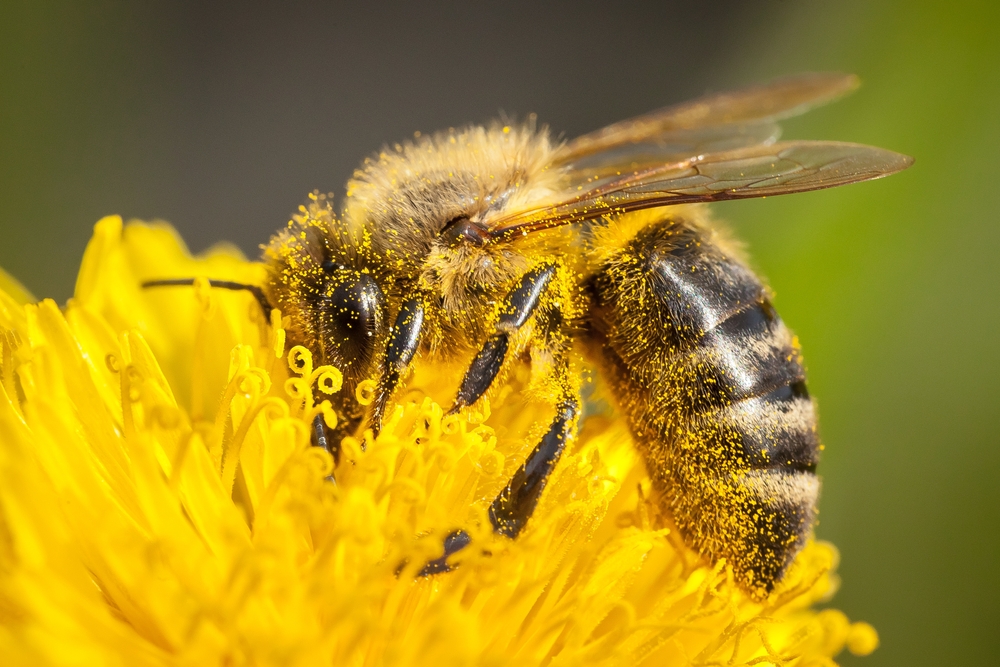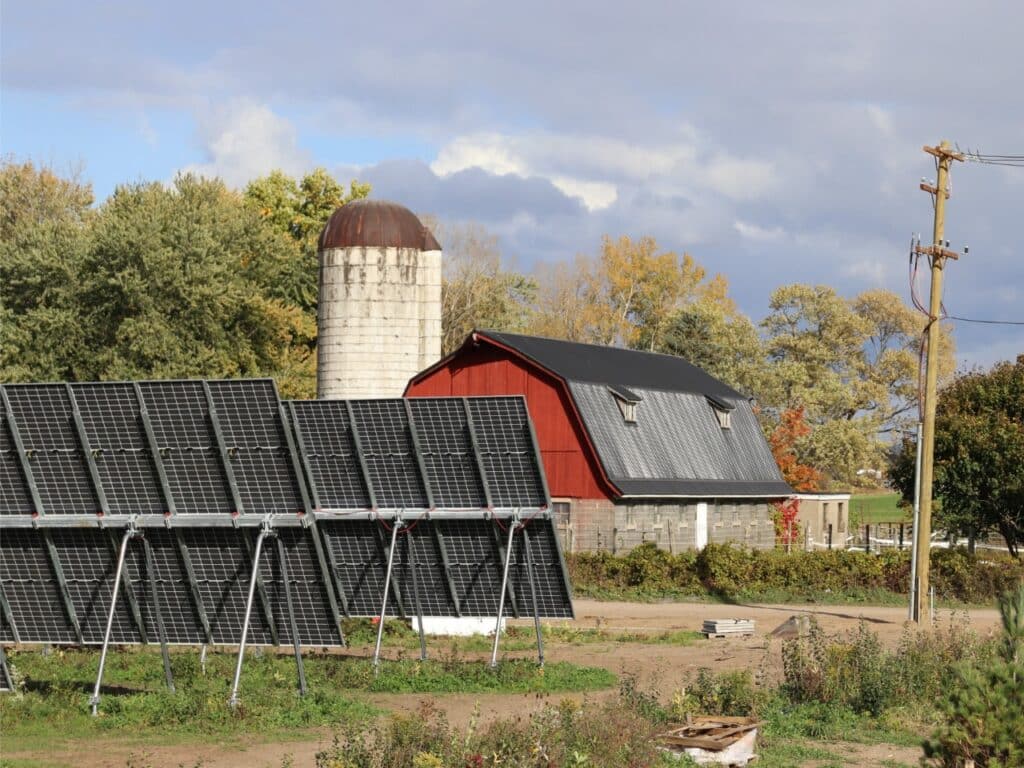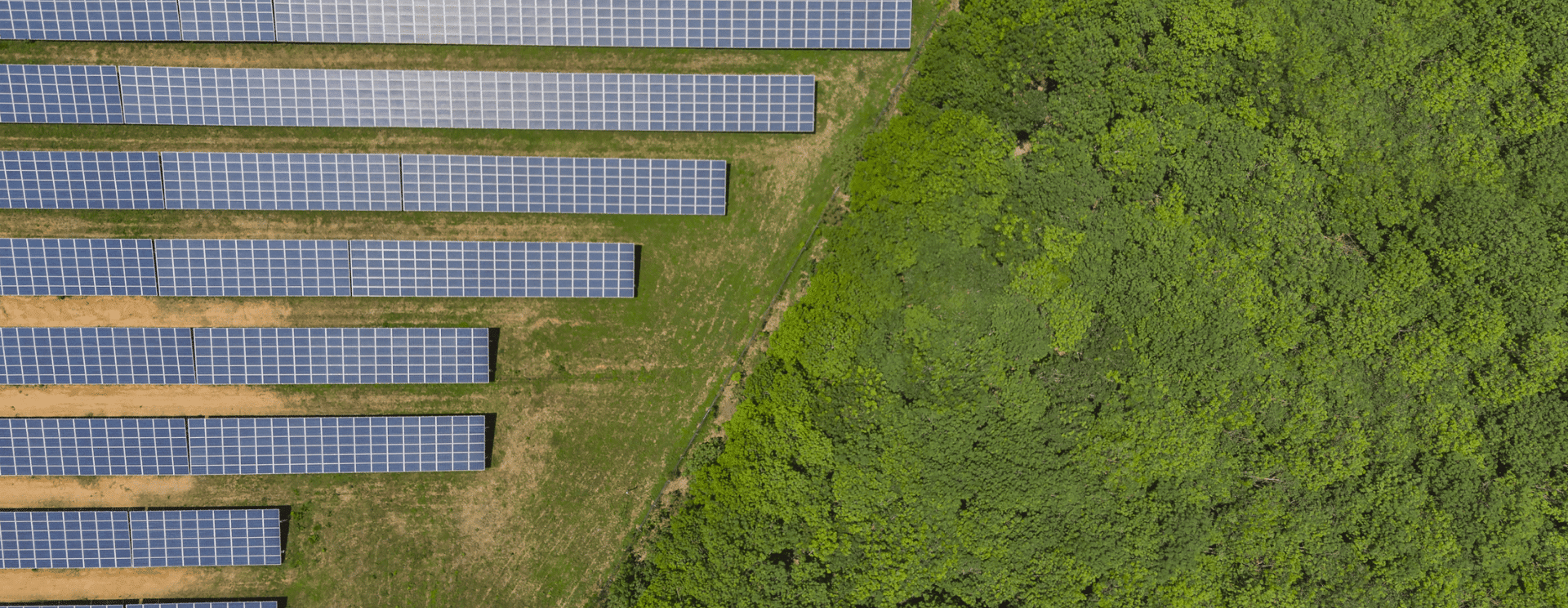Bee Kind: Developing Pollinator-Friendly Solar Projects

As solar projects pop up nationwide, developers are embracing the idea of doing more with the land they utilize.
Occasionally, solar EPCs work with farmers to introduce sheep and goats to their sites – this is called agrivoltaics. The animals get a safe space to graze, and solar site operators get free 24/7 mowing services.
But another concept is also gaining steam in the solar community – pollinator-friendly habitats. From bumblebees and butterflies to moths, flies, birds, and certain bats, plenty of creatures can take advantage of pollinator sites.
Pollinator habitats are part of the growing ecovoltaics movement, marrying ecology, biodiversity, and renewable energy. The result is a new-age conservation effort promoting clean energy production, land conservation, and natural beauty.
But what’s the incentive for developers to spend time and money building dual-purpose ecovoltaic sites?
Why Solar EPCs Buzz About Pollination
Utility-scale solar farms typically sit on former brownfields, undesirable areas, and unused farmland.
But native plants and vegetation do more than add pops of color to an otherwise unattractive installation. They help developers maximize land use while saving money and improving performance.
Safer, More Efficient Projects
Native flowers, shrubs, and other plants reduce erosion risks, especially for hillside installations.
It can take several years for native plant species to establish themselves, allowing their extensive root systems to tightly hold soil. But over time, these plants improve overall soil health, compaction, and topsoil nutrient density.
Adding perennials, shrubs, and other long-term native vegetation can protect installations from potential damage. For example, in the Northeast, infrastructure is susceptible to frost heave damage. Frost heaves occur when water freezes underground, causing the surface ground to rise. Heaves can severely damage infrastructure, including solar panel racking and foundations.
Beyond improving soil and preventing damage, native plants block weeds and other invasive species. Unlike random flowers and invasive plants, native species are best-suited to survive.
Better Performance
Solar installations rely on many factors to optimize solar panel efficiency, including plant use.
Unlike bare ground, which can trap heat and cause ambient air temperatures to fluctuate, native plants stabilize and reduce temperatures around panels. According to data from Yale, regional vegetation reduces the temperature around solar systems, improving solar panel performance.
Plants absorb heat, creating a cooler microclimate around the base of the solar panels. The cooler temperatures, in turn, boost solar power plant efficiency.
Another factor dictating performance is dust buildup on the panels’ faces. Dust blocks panels from collecting sunlight, reducing power production, and can quickly compound across utility-scale solar power sites, forcing crews to clear and clean panels.
Native plant species use their roots to hold dirt and soil and reduce dust buildup. In turn, solar panels don’t pick up as much dust, and crews don’t have to clean as often.
Supports Biodiversity
According to the United States Geological Survey, there are roughly 4,000 bee species in the U.S. and over 20,000 globally.
Native bees pollinate about 80 percent of the world’s flowering plants, but their populations have suffered recently. Researchers at Washington State University suggest commercial honeybee colonies could drop by up to 70% this year. If the number sounds alarming, it is – the average annual loss is typically 40-50%.
Bee colonies face several dangers in the wild, including mite infestations, poor nutrition, and pesticides. To better protect delicate species, developers can invest in native plants that bloom at different times of the year. This keeps the solar project looking beautiful and creates food for bees, butterflies, and other pollinators.
Cleaner Water
Farming is crucial to our country, but it can potentially harm the environment.
Farming uses fertilizers, pesticides, and other chemicals to ward off pests and improve crop yields, but they come at a cost. Fertilizer helps plant growth, but rainstorms and irrigation systems allow nitrate and phosphorus runoff to reach rivers and streams.
According to Clean Wisconsin, solar projects with perennial grassland reduced phosphorus entering nearby water 75-95%, compared to row crop farms.
Solar installations take former farmland and use it for power generation. Adding local pollinator plants reduces contaminants in the soil while improving farming conditions for future use.
Lower Labor, Operations, and Maintenance Costs
Native plants, especially perennials, need less maintenance than standard grass.
When developers use local plant species, they help prevent weeds and other invasive species from taking over. They also collect and retain moisture for the land, reducing dust. For crews, more perennials mean less time moving, fewer pesticides, and less frequent cleanings.
Damage Control
Maintenance goes far beyond cutting the grass and doing some weed whacking. Well-established pollinator plants provide excellent erosion control. Soil erosion threatens every part of a solar project, potentially damaging roads, ground pads, and solar panel foundations. Any damage to critical infrastructure reduces output, creates hazards, and puts projects at risk.
Additionally, soil erosion can lead to pollution. Soil runoff following a heavy storm or snowmelt sends sediment, pesticides, and other chemicals into rivers and streams. If this happens, developers could face fines and other penalties.
Less soil erosion also means crews spend less money on stormwater infrastructure. Because the plants hold dirt in place and absorb rainwater, there’s less need for extensive drainage systems. This isn’t to say companies can eliminate drainage systems entirely, but plants go a long way toward helping.
Vegetation is Encouraged
Several states have regulations requiring solar developers to use pollinator-friendly regional plants, including New York, Illinois, Maryland, and South Carolina.
But even if vegetation regulations aren’t in place, it’s still good practice. Solar developers are leaning into creating pollinator-friendly environments, not only because of their beauty, but for goodwill.
Local communities sometimes aren’t thrilled about solar projects, calling them eyesores. Planting local trees and shrubs helps obscure the panels from the roadside, offering a better view than metal racking.

Those same trees and plants can also pay back local farmers – literally.
More pollinators mean more pollination, and as bees, butterflies, and moths move pollen, nearby farms could see higher yields. According to one Clean Wisconsin study, soybean yields near pollinator-friendly solar sites increased by $250 per acre annually.
Most importantly, well-thought-out native plant programs could reduce permitting red tape and improve community relations. Work with local and state conservation organizations to determine what plants work best for the area.
Pollinator Planting Tips
If you’ve ever planted a garden, you know how difficult it is to keep everything alive and fruitful.
Unlike a garden, pollinator plants at solar sites are much more forgiving. With the right plant selection, placement, and patience, developers can create beautiful landscapes everyone can enjoy.
Choose the Right Plants for the Environment
Don’t select flowers and bushes because they’re cost-effective; look for plants that fit the region and environment.
Combine native shrubs, trees, plants, flowers, and grasses to create diverse habitats. Additionally, find plants and flowers that bloom throughout the year, not all at once. This ensures pollinators can access nectar at every life stage and every season.
Additionally, like solar panels, plants thrive with sunlight, often requiring at least six hours per day. Understand which plants thrive best in which conditions – some soak up the rays while others are more sensitive to intense light.
Avoid Pesticides When Possible
Pesticides impact plant growth, and research has linked them to bee colony deaths. If maintenance crews must use pesticides, keep it to a minimum. For example, pesticides could work for small areas and spot treatment of weeds, but may kill the pollinators we want to protect.
Be Strategic and Patient
Understanding how plants operate in their natural settings goes a long way.
Don’t overplant to fill space – some vegetation needs room to thrive and build strong root systems. It also helps to keep some bare ground available for water puddling, which ground insects like wasps, bees, beetles, and butterflies need for habitats.
Once crews have finished planting, the best thing developers and operators can do is wait. It can sometimes take plants 2-3 years to fully establish themselves, with others taking as long as five to develop strong root systems.
Giving plants the time and space to reach their full potential leads to better installations and more beautiful landscapes.
When In Doubt, Hire it Out
Let’s face it – some project developers weren’t born with a green thumb, and that’s ok. Invest in a horticulturalist or landscaper with in-depth knowledge of the region, project, and goals.
Landscape experts can determine what shrubs, flowers, and plants make the most sense, where they should go, and prescribe care plans. With those tools in place, crews can build pollinator palaces that look great and help the planet.


